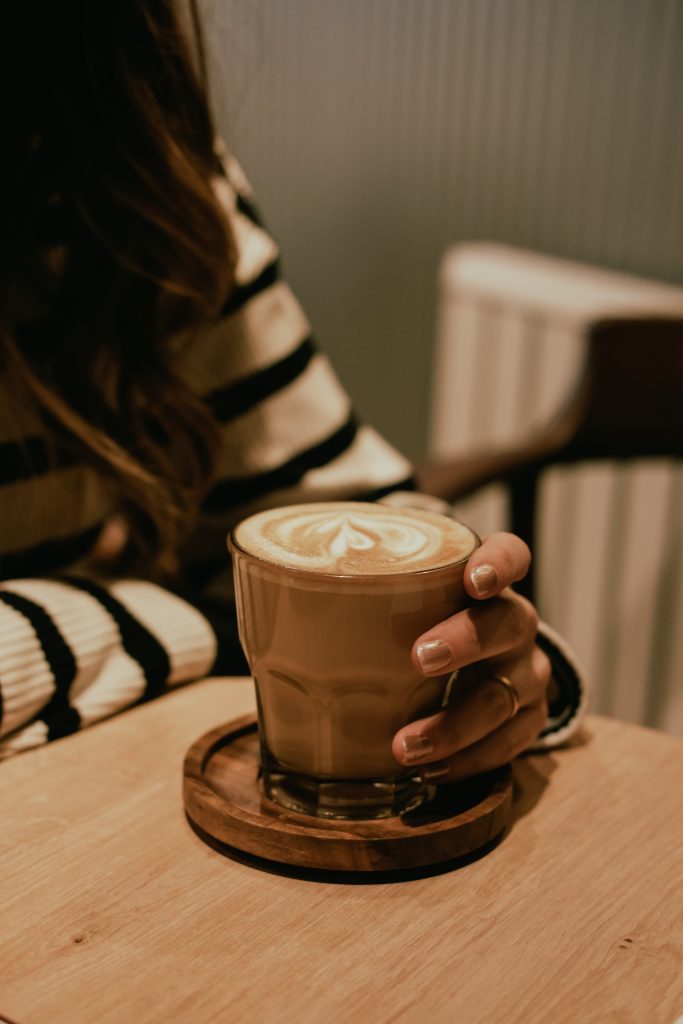Coffee is one of the most popular beverages in the world, consumed by millions of people every day. While many enjoy the rich, bold flavors of their favorite brew, few understand the complex scientific processes that go into creating the perfect cup of coffee.
From the chemical compounds that give coffee its unique flavor and aroma to the brewing methods and techniques used to create the perfect cup, there is a wealth of scientific knowledge behind this beloved drink.
In this article, we will explore the science behind coffee brewing, with a focus on the chemical compounds that give coffee its distinct flavor and aroma, the impact of roasting on flavor, and the various brewing methods and techniques used to create different flavor profiles.
We will also discuss the role of water temperature and brew time, as well as the importance of grind size in coffee brewing. By understanding the science behind coffee, we can better appreciate this beloved beverage and create our own perfect cup at home.
Chemical Compounds in Coffee

Get a VPS from as low as $11/year! WOW!
Various chemical compounds, including caffeine, chlorogenic acids, and melanoidins, are present in coffee and contribute to its flavor, aroma, and physiological effects.
Caffeine is a central nervous system stimulant that enhances alertness and mood and is responsible for the energizing effects of coffee.
Chlorogenic acids are a group of compounds that provide coffee with its bitter taste and have been shown to have antioxidant and anti-inflammatory properties.
Melanoidins are formed during the roasting process and contribute to the brown color of coffee, as well as its rich aroma and flavor.
The amount and distribution of these compounds in coffee beans can vary depending on factors such as the variety of coffee plant, the region where it was grown, the processing method used, and the degree of roasting.
For example, Arabica coffee beans generally have lower levels of caffeine and chlorogenic acids than Robusta beans.
Lighter roasts tend to have higher levels of chlorogenic acids, while darker roasts have more melanoidins.
The brewing method can also affect the extraction of these compounds, with longer brewing times resulting in higher levels of caffeine and chlorogenic acids.
Understanding the chemical composition of coffee and how it is affected by various factors can help coffee drinkers appreciate the complexity and diversity of this popular beverage.
It can also inform decisions about which types of coffee beans and brewing methods to use for optimal taste and desired physiological effects.
The Impact of Roasting on Flavor
Roasting is a crucial factor in determining the flavor profile of coffee, as it affects the chemical reactions that occur during the process. During roasting, a series of complex chemical reactions occur, which lead to the development of the unique flavor and aroma of coffee. The roasting process involves the application of heat to green coffee beans, which triggers a series of chemical changes that alter the physical and chemical properties of the beans.
The impact of roasting on coffee flavor can be seen in the formation of volatile compounds, such as acids, aldehydes, ketones, and esters. These compounds are responsible for the characteristic aroma and flavor of coffee. During the roasting process, the green coffee beans undergo a series of chemical changes that result in the formation of these volatile compounds, which contribute to the unique flavor profile of each coffee variety.
The degree of roasting also plays a crucial role in determining the flavor profile of coffee, as different roasting levels produce distinct flavor profiles. The flavor and aroma of coffee are determined by the complex interactions between chemical compounds that occur during the roasting process. The roasting process alters the physical and chemical properties of coffee beans, which leads to the development of unique flavor profiles.
The degree of roasting plays a crucial role in determining the final flavor profile of coffee. Therefore, understanding the impact of roasting on coffee flavor is essential for coffee lovers and professionals in the coffee industry.
Brewing Methods and Flavor Profiles
Different brewing methods can significantly impact the flavor profile of coffee, as each method extracts different compounds and flavors from the beans. The most common brewing methods include drip, pour-over, French press, and espresso. Each method involves different variables, such as water temperature, grind size, and brew time, which affect the extraction of flavor compounds.
Drip coffee is the most common brewing method and produces a mild, smooth cup of coffee. This method involves hot water slowly dripping through a paper filter filled with ground coffee. The water temperature is typically around 195-205°F, and the brew time is around 5-7 minutes.
Pour-over coffee is similar to drip coffee but involves manually pouring hot water over the coffee grounds. This method allows for more control over the variables, resulting in a brighter, more nuanced cup of coffee.
French press coffee involves steeping coarse coffee grounds in hot water for 4-5 minutes before pressing down a plunger to separate the grounds from the liquid. This method produces a bold, full-bodied cup of coffee with a rich flavor profile.
Espresso, on the other hand, involves forcing hot water through finely ground coffee beans at high pressure. This method extracts a concentrated, strong cup of coffee with a creamy texture and a complex flavor profile.
By understanding the brewing methods and their impact on flavor, coffee drinkers can choose the method that best suits their preferences.
The Role of Water Temperature and Brew Time
Water temperature and brew time are crucial variables in coffee brewing, as they directly impact the extraction of flavor compounds.
The temperature of the water has a significant effect on the rate of extraction, with hotter water leading to faster extraction.
However, if the water is too hot, it can also result in over-extraction, which can lead to a bitter taste.
On the other hand, if the water is too cold, the extraction process will take longer, resulting in a weaker flavor profile.
The ideal water temperature for coffee brewing is between 195-205°F, which allows for optimal extraction without over-extraction.
Brew time is also a critical factor in coffee brewing, as it determines the amount of time that the water is in contact with the coffee grounds.
A longer brew time typically results in a stronger flavor profile, while a shorter brew time produces a weaker taste.
However, there is a fine balance between the two, as over-extraction can occur if the brew time is too long.

The optimal brew time for coffee brewing varies depending on the brewing method, but it typically ranges from 2-5 minutes.
The role of water temperature and brew time in coffee brewing is essential in determining the resulting flavor profile of the coffee.
The water temperature affects the rate of extraction, while the brew time determines the amount of time the water is in contact with the coffee grounds.
It is essential to maintain a balance between the two to achieve the desired flavor profile.
By understanding the science behind coffee brewing, one can become a better coffee brewer and appreciate the nuances of different brewing methods.
The Importance of Grind Size in Coffee Brewing
Grind size plays a crucial role in determining the flavor and aroma of coffee, as it influences the rate of extraction and the surface area of the coffee grounds.
The finer the grind, the larger the surface area of the coffee grounds, which facilitates faster extraction. Thus, a fine grind is suitable for brewing methods that have a short contact time, such as espresso.
On the other hand, a coarse grind is suitable for brewing methods that have a longer contact time, such as French press, as it allows for a slower extraction.
The influence of grind size on the extraction rate is due to the fact that smaller particles expose more surface area, which makes it easier for water to extract the soluble compounds from the coffee.
However, if the grind is too fine, it can lead to over-extraction, resulting in a bitter and unpleasant taste. Conversely, if the grind is too coarse, it can lead to under-extraction, resulting in a weak and flavorless cup of coffee.
Thus, it is essential to select the appropriate grind size based on the brewing method and personal preference.
Grind size is a critical factor in determining the flavor and aroma of coffee, as it affects the rate of extraction and the surface area of the coffee grounds.
Finding the appropriate grind size can be a matter of trial and error, as it depends on the brewing method and personal taste. Nonetheless, understanding the role of grind size in coffee brewing can help coffee enthusiasts achieve their desired flavor and aroma.
Conclusion
In conclusion, understanding the science behind the coffee brewing process is essential to achieving the perfect cup of coffee.
The chemical compounds in coffee, the impact of roasting on flavor, the brewing methods and flavor profiles, the role of water temperature and brew time, and the importance of grind size all play a critical role in determining the taste and quality of coffee.
By mastering these principles, coffee enthusiasts can experiment with different brewing methods and find the perfect balance of flavor and aroma that suits their personal preferences.
As coffee continues to be one of the most popular beverages in the world, it is important to understand the science behind its brewing process.
By doing so, we can appreciate the complexity and diversity of coffee and elevate our coffee drinking experience.
With the right combination of variables, such as the coffee bean origin, roast level, brewing method, and water temperature, coffee lovers can create a truly unique and satisfying cup of coffee that can be enjoyed any time of day.







